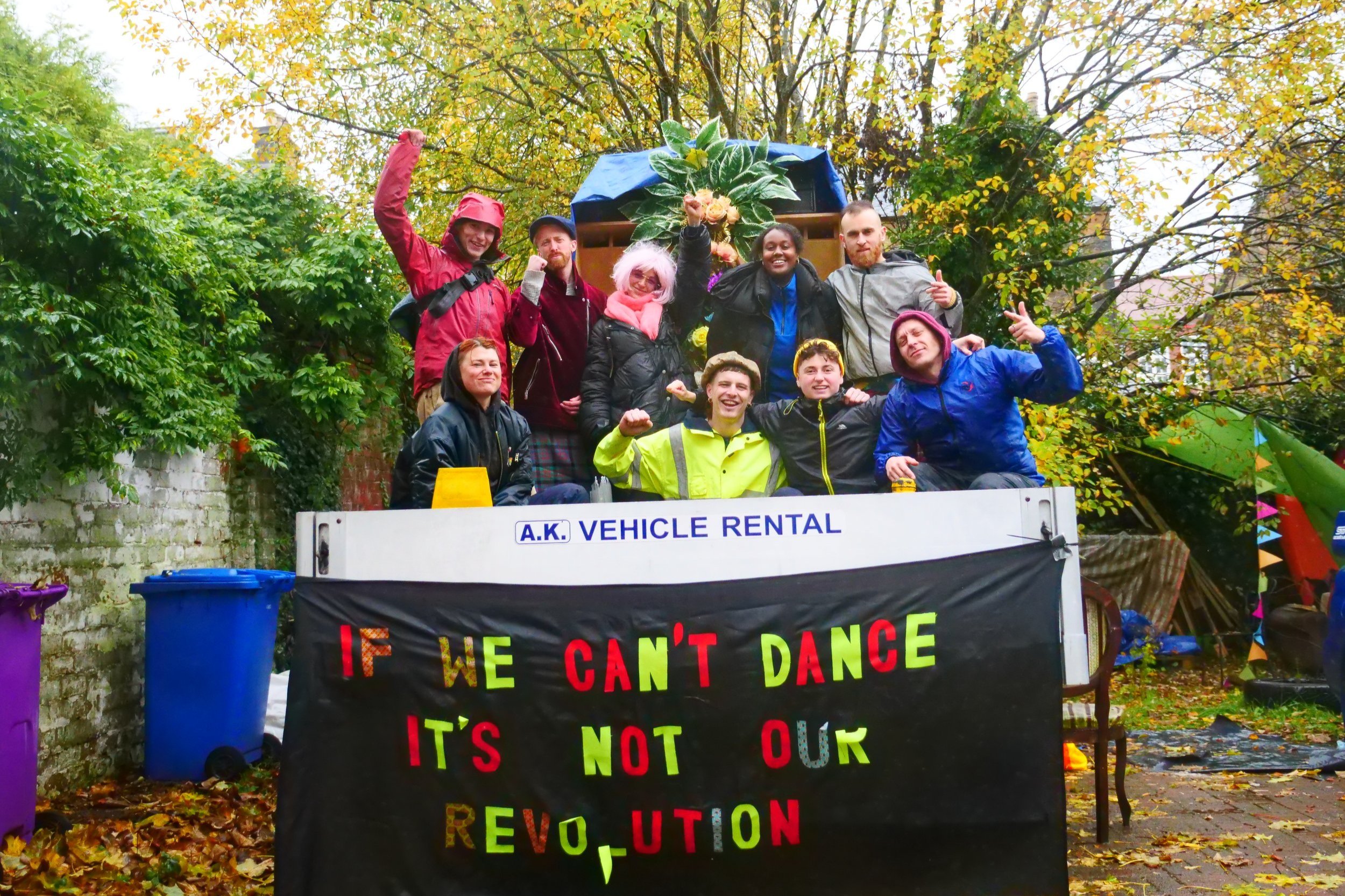‘If We Can’t Dance, It’s Not Our Revolution’: The Southside Community Soundsystem
On the day of the biggest climate justice march in Glasgow, the Southside feeder march was kept buoyed by a community built soundsystem that encapsulated the spirit of the area, with a nod to the political beginnings of sound-system culture
Some of those involved with organising the Southside Feeder March | Photo courtesy of Hannah Wright
By Jack Howse
Perhaps the prevailing image of COP26 will not be of delegates signing an imperfect climate agreement, but of the Glaswegian communities and activists who took to the streets to demand a better climate future for all. The Global Day of Action on Saturday 6 November saw over 100,000 people take to the streets in a display of mass community action, including many community groups and families from the Govanhill area.
The official start point of the march was Kelvingrove Park in the west of the city, and was organised into various blocs. However, a number of community organisers, groups and activists in the Govanhill area noticed that there was no designation specifically for grassroots, community-led projects. Consequently, the Southside Feeder March would begin in Queen’s Park.
Roma dancers passing through Tradeston | Photo courtesy of Hannah Wright
Whilst the sheer amount of organisation and planning for the event was daunting, one of the positives of a lack of official support was that organisers of the march had more freedom to curate a march that displayed the best of Govanhill, namely the community-led spirit of the area.
Organisers decided to hire a van and use a community-built sound-system to buoy the attendees as they walked the two miles into the city centre. As Tami Pein, a Govanhill climate activist and DJ, said: “Music is important at protests because we want it to be a party; a celebration of all the amazing local projects in Govanhill.”
On the day of the march, the sound-system was mounted onto the back of a van by a team of volunteers. The DJ line-up was curated by local Afro-House musician and Radio Buena Vida mainstay, Butho the Warrior. Genres played included everything from Afro-House, garage and dub to Eastern European folk and queer anthems. The event was MCed by Tami who led chants such as: “From Southside to the Clyde, we march for climate justice”.
The sound-system provided a welcome morale boost for the rain-soaked protestors as the march trundled along the streets into town. Ben, however, stressed that: “Sound-systems are not just a party-starter at protests. I think it is really important to remember the political beginnings of sound-system culture”.
The community built soundsystem | Photo courtesy of Hannah Wright
Sound-systems were known in the 60s and 70s as ‘singing newspapers’ and served as platforms for politized satire both through spoken word and song choice. A community build sound-system is an act of political defiance and a platform for free-speech. Furthermore, sound-systems allow for a reclamation of urban spaces that many marginalised communities have been traditionally ostracised from.
The political potentiality of sound-systems were demonstrated throughout the Southside Feeder March. Marchers were invited to address the dancing crowd on an open-mic hooked up to the sound-system. Many Govanhill residents shared their opinions on COP26 and the climate crisis with a particular highlight being 12 year-old Zed reading out a poem about climate change. Dancers from Govanhill’s Roma community also took over the soundsystem and led the crowd in an impromptu dance lesson.
Zed and his poem | Photo courtesy of Hannah Wright
As the march made its way up through Tradeston, it started to encounter more police presence. Just before crossing the Clyde the group was blocked by the police and held there for nearly two hours. The Roma dancers took over the soundsystem to demand that the police let them through. Eventually, the march joined the main artery of the protest as it snaked down to Glasgow Green.
The organisers of the march believe that the community-led organisation of the Southside capillary is a testament to the nature of Govanhill. “I wanted to be a part of a community-led protest against climate change” said Shelia, a local activist.
The intention is to hold more community and mass-action events, particularly focusing on climate justice.



